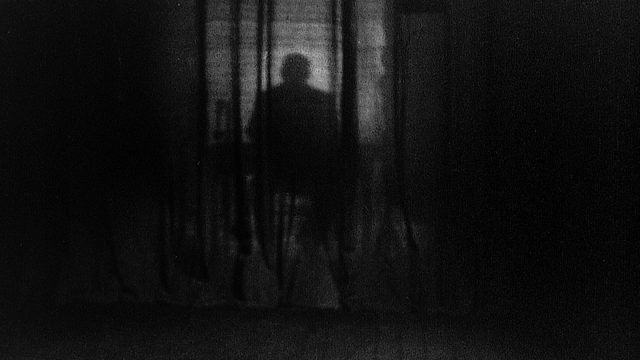Fritz Lang’s German films are often called “art films” by American critics and exhibitors, largely because they are a) German, and b) associated with Expressionism, a movement closely linked to fine art and the Weimar Republic Lang worked within. Before Peter Bogdanovich’s reappreciation of Lang’s more lowbrow American crime films in the 1960s, most reviewers felt that his English-language efforts lacked the artistic daring of their Teutonic predecessors. One does not need an exhaustive engagement with movies like Spione, Dr. Mabuse, the Gambler, Metropolis, and M to realize that the director had an affinity for pulpy narrative sources from early on in his career, and that their “artiness” always bowed to the altar of showmanship. In spirit, Lang was closer to the melodramatic sensationalism of Cecil B. Demille than the dour social criticism of Ernst Kirchner or George Grosz
The Dr. Mabuse films provide a case in point. Both the aforementioned film and its 1933 sequel trace the nefarious influence of a criminal mastermind whose motive seems less inclined to greed than undermining the stability of state. These complex tales, interweaving numerous narrative arcs, owe a debt of inspiration to the racialist pulp novels of Sax Rohmer and the exotic threats of the “oriental” mastermind Dr. Fu Manchu. Punctuated by violence, chase sequences, and daring escapes from locked rooms, the Mabuse pictures resemble the afternoon serials that preceded the feature when they were first exhibited in Germany’s movie houses.
That isn’t to say that they aren’t dynamically constructed, or mere journeyman efforts. Much of Testament’s suspense, for example, comes from how it interweaves story threads that have no particular sense of connection at the outset. The first tangent follows a disgraced police officer named Hofmeister, who attempts to atone for taking bribes by exposing a counterfeiting ring. Before he can track down his former supervisor, the portly, humane Inspector Lohman, he is driven to a nervous breakdown after several “accidents” that nearly cost him his life. Lohman is both moved and intrigued by Hofmeister’s passion for justice, and he pursues the counterfeiters, only to find that they are connected to a much larger conspiracy tied to the title character, who is seemingly out of commission, locked into a catatonic state in a private mental hospital.
The superintendent of that facility, Dr. Baum, constitutes the second thread. Introduced giving a lecture on Mabuse’s brilliant psychopathy with perhaps too much enthusiasm, he proceeds to maintain control of the hospital by hiring gangsters to murder a fellow shrink who might be tamping down on his obsession. Not surprisingly, he soon becomes Hofmeister’s caretaker, which eventually brings him into contact with Lohman. Mabuse soon begins transcribing, while in a sleepwalking state, a testament of crimes, such as the bombing of a chemical factory, that seem to come true despite his lack of contact with the outside world. Could Baum be the connection?
The third strand follows Tom Kent, the archetypal criminal who, while trying to go straight under the influence of a good woman, can’t escape the clutches of the underworld from which he escaped. He decides not to join in the assassination of Dr. Baum’s rival, and thus earns the wrath of Mabuse’s henchman, led by the jewel fence Karetzky. Through this character and the henchmen who pursue him, we see Mabuse communicate his commands. Like the Wizard of Oz, his voice emanates behind the curtain in a spartan yet fortified room which also acts as an explosive-filled death chamber.
All of these strands come together to form a coherent, causality-centered whole by the time the movie finishes, but what gives the Testament of Dr. Mabuse an especially sinister after-effect is the ambiguity of the title character’s power. Is he channeling a metaphysical force or do the characters project their own feelings of the uncanny onto him in order to to unleash their good or evil impulses? Not only does the script leave this question open-ended, its editing contributes to the effect by bridging scenes with suggestive, rather than literal, rhyming patterns. A brief reference to the place Hofmeister was almost killed is juxtaposed against a map of Berlin hanging in the background of a police station. As in Joseph Von Sternberg’s and Rouben Mamoulian’s films, sound mixing contributes to this effect. The ticking of a bomb in one scene leads into Karetzky tapping on an egg in the next. Plotwise, the movie logically and coherently leads the police, and Kent, to ending, or at least curtailing Mabuse’s reign of terror, but the use of connotative imagery and sound lend the proceedings a decidedly unresolved sublimity.
As many scholars have suggested, this effect refracted the zeitgeist surrounding the fall of the Weimar Republic and the rise of Nazism. One might, as Siegfried Kracauer did, go so far to critique the film for mystifying, rather than documenting, the context it subtextually evokes. While the movie only hints at an Expressionistic influence, it uncannily conjures certain sinister vibes emanating from the economic and geopolitical turmoil of the 1930s. Lang was primarily a showman, but his pulpier instincts did not inherently suppress a broader awareness of the anxieties swarming over the filmgoing public, and this sensibility makes The Testament of Dr. Mabuse still relevant to our era.
.

